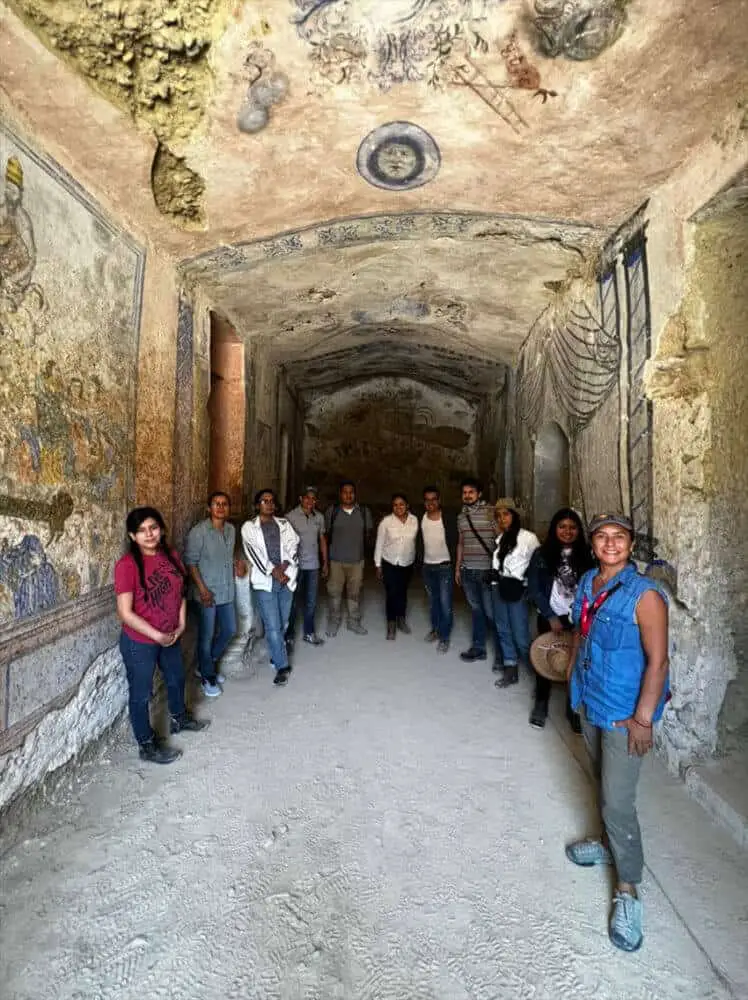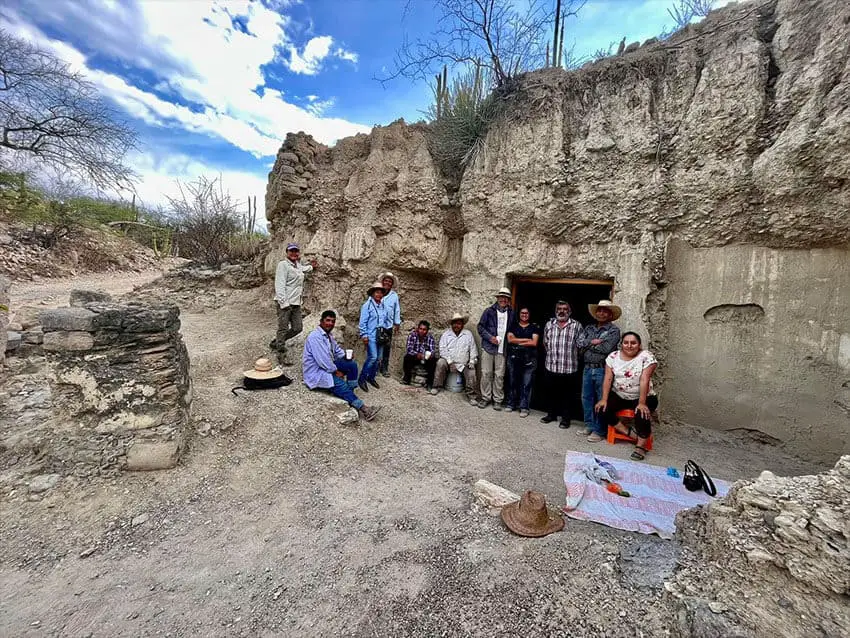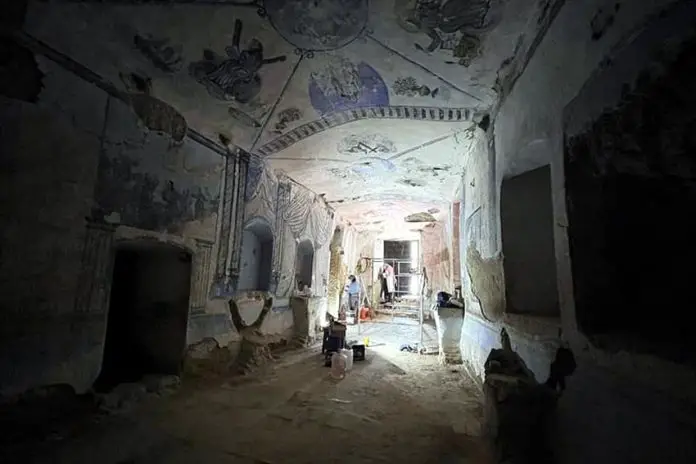Restoring a 16th century chapel in southern Puebla that partially collapsed in an earthquake is the goal of a team of volunteers that that has been working on the project for the past month.
The vault and arches of the so-called Capilla Enterrada (Buried Chapel) collapsed during an earthquake in the 1970s. It has remained closed ever since.
But in late May a team of archaeologists, restorers, architects, historians and others began the arduous task of restoring the chapel to its former glory – and the first stage of the project has now concluded.
Located within the Tehuacán-Cuicatlán Biosphere Reserve – a UNESCO World Heritage site – in the municipality of Zapotitlán, the Capilla Enterrada is now in a much better state than it was a month ago, although there is still plenty more work to do.

Led by the restorer Norma García, the volunteer team has removed rubble from the chapel, disinfected it and carried out work to strengthen the structure. It has also begun the restoration of the murals on the chapel’s walls and installed mesh to prevent birds and bats entering via a previously-installed provisional door that was removed.
The second stage of the project, which will entail additional reinforcement work, will begin at a later, as yet unspecified date. Members of the specialist team are looking at historical images of the chapel that will help them restore elements of the structure that have been lost, the newspaper Reforma reported.
García – founder of Yo Restauro Patrimonio (I Restore Heritage), a civil society association dedicated to raising funds for restoration projects – said the chapel’s function as a religious location will be recovered once the restoration work concludes. Before its partial collapse, the chapel – located about eight kilometers northeast of the town of Zapotitlán Salinas – was frequented by people participating in religious processions, especially during Holy Week. Centuries ago, it gave shelter to people traversing a colonial area trade route.
After it was built in the 16th century, the structure was initially used as a storehouse for salt, which continues to be mined in the area. It subsequently became a chapel replete with murals that were painted in the 16th century on the instructions of a Spaniard who owned the land on which it was built. It was repainted with new religious scenes in the 19th and 20th centuries, said Jesús Joel Peña, a historian who carried out an iconographic analysis of the murals.

While the members of the expert team are donating their time, the restoration project – which is endorsed by the National Institute of Anthropology and History (INAH) – has received financial and material support from private companies including Oxical, a supplier of restoration and conservation materials.
Local authorities have also supported the project, but Yo Restauro Patrimonio is nevertheless seeking additional donations of money and materials as well as more volunteers. García told Reforma that the project could be finished within three years if all the required support is found. Allowing the local community to use the chapel is crucial to ensuring its long-term survival once the current conservation efforts have concluded, she added.
“It will be hard to maintain a building that has been restored if it doesn’t have a function within the community – it doesn’t matter if you’ve invested millions of pesos,” García said. “In this case, the [local] people really value it and once some of its religious functions resume, [there will be] all the more reason for it to be preserved,” she said.
With reports from Reforma and La Jornada
